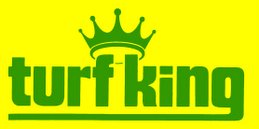Visited a lawn today.
On the front was a patch of exposed lawn.
This lawn was sodded in the past couple of years. But the thatch layer is very dense and thicker than it should be. Thatch is good and bad.
A little thatch does help to reduce moisture loss due to evaporation. A small amount can help to cushion the soil from excessive traffic and reduce the risk of compaction.
Too much thatch, however, can act more like a thatch roof. In this case, it prevents rain and water from reaching the root zone. Rain will wash off the lawn rather than seeping into the soil. Excessive thatch also reduces the amount of beneficial oxygen that can reach the roots. It can also impede the movement of fertilizers to the roots. A thick layer of thatch also is where insects like chinch bugs can reside and then cause extensive damage to the turf. And lastly, grubs, while we think of them as eating grass roots, do seem to enjoy feeding on thatch as well. This make "thatchy" lawns more likely to experience a grub attack.
Thatch as seen in the picture above is best removed by core aeration. A dethatching will only treat the symptoms. The real problem is a lack of oxygen to the microbial population that normally decomposes the thatch layer. By improving the soil structure with an aeration, the excess thatch will disappear.


